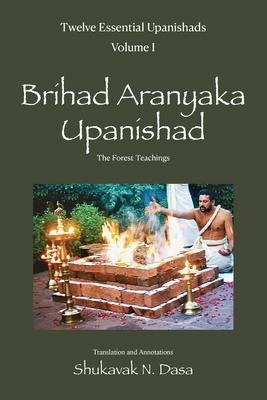The Brihad Aranyaka Upanishad, also known as the "Great Forest Upanishad," holds a prominent place among the principal Upanishads, which form the foundation of Hindu spiritual thought. Though part of the oldest Hindu traditions, the concepts are not bound by geography and historical time, or even Hinduism itself. They are human and universal teachings which offer valuable insights and serve as a comprehensive source of knowledge for seekers of truth.
One of the great accomplishments of modern comparative religion is the distinction that can be made between belief and faith. This was first brought to our attention by the theologian Wilford Cantwell Smith, who made this distinction back in the 1960s, in his book The Meaning and End of Religion. There he drew the distinction that within what we call religion are actually two components, an accumulated religious tradition and religious faith itself. The architecture, music, scriptures, doctrines, forms of dress, prayers, and even foods, etc., all form what he called the accumulated religious tradition. And then lying at the foundation of this accumulated tradition is the actual religious faith itself. The two interact: Faith produces the religious tradition in the first place and then in turn is nurtured and supported by that accumulated tradition. If we accept this distinction, that belief and faith are not the same, then we realize that what one believes, the doctrines, the creeds, the theology, etc., are part of an accumulated tradition and therefore subject to change.
"This translation has been made by a Westerner who is also a practitioner. Given my Western perspective and knowing the distinction between faith and belief, I have tried to work with these sacred texts to find relevant meaning for who I am as a Westerner schooled in the West, but who is deeply involved in India and Hindu traditions. Being freed from the constraints of needing a vedānta, whether in the tradition of Shankara, Ramanuja or Madhva, allows me to look at these Upanishads in a new way."
The text of an ancient document is a snapshot of how things were at the time the particular document was composed. These Upanishads were first composed thousands of years ago, and therefore, we are looking back in time, seeing the state of religious thinking and practice in India at that time. Yet the Upanishads are valuable and sacred works that also speak to our time and beyond India. They are human yearnings for ultimate meaning and therefore a part of human religious thinking.
The Brihad Aranyaka Upanishad explores the metaphysical concepts and philosophical inquiries regarding the nature of the ultimate reality. It delves into profound contemplations on the origin and nature of the universe, the Supreme Force (brahma), and the relationship between the individual self (ātmā) and the cosmic consciousness. Through intricate and poetic dialogues, it explores the nature of existence, creation, and the interconnectedness of all things.
This early Upanishad focuses on the fire sacrifice (agni-hotra), which shapes the worldview of ancient Vedic culture. The sacrificial fire becomes a metaphor for the universe. The heavens, sky, earth, man and woman are seen as altars of burning fire. All life is a sacrificial fire. Feed that fire!
Cover photo: A Hindu priest in Kerala, India performs a fire sacrifice (agni-hotra) and throws offerings into the consecrated fire.
